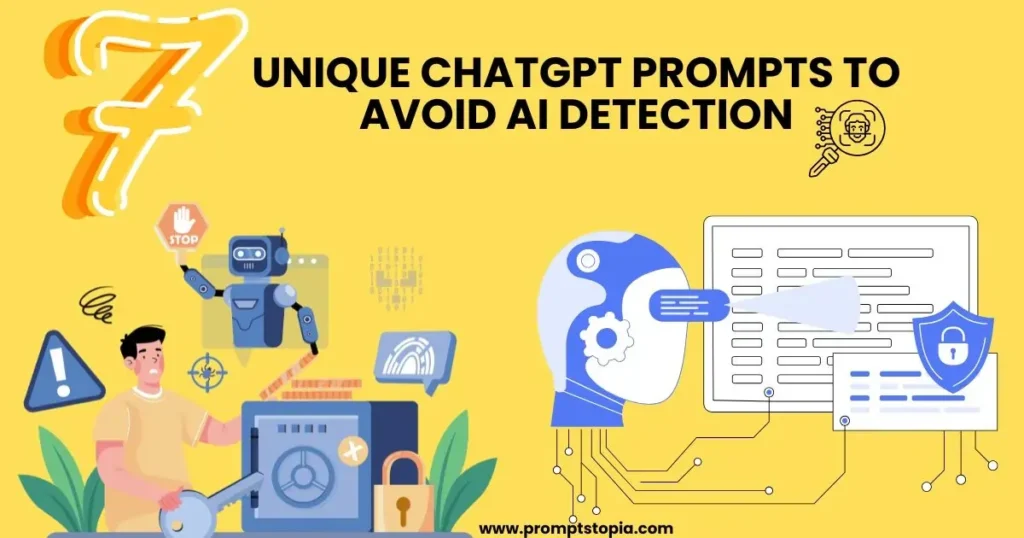You write out a well-written article, press publish, and wait. But rather than getting traffic, you get flagged.
Ring a bell?
Content creators put effort into content creation, but AI detection algorithms might incorrectly identify their work as being generated. This can affect credibility, reach, and even monetization.
The main problem is that AI detection tools search for patterns, wording, and structure and often misidentify even human-written text as generated. If you’re looking for the perfect ChatGPT prompt to avoid AI detection, you require more than mere simple fixes; you need a strategy and planning.
Let’s first understand how AI detection works before giving the best strategies for getting over AI.
How AI Detection Works
AI detection tools read text to see if it is generated by a machine. These tools check sentence patterns, word selection, and grammar to identify predictable AI-written content. If your writing follows a structure, it’s more likely for your content to be detected. That’s why the proper ChatGPT prompt to avoid AI detection matters.
Most detection models are based on prompt engineering frameworks to understand how AI generates text. They compare writing to common types of prompts used in language models. If a response looks too structured, it will get detected. The strategy to avoid this? Breaking predictable patterns with iteration and improving until the content feels natural.
Another part is roles in prompt engineering. When you specify a role (such as “write as a journalist” or “respond as a historian”), the text is more developed. But even so, AI classifiers look for unnatural wording. A prompt engineering roadmap is useful in this case as it teaches users how to create prompts that generate more human-like responses.
How to Avoid AI Detection with ChatGPT?
Ever thought why some AI-generated content gets detected while others go undetected as human-written?
AI detection tools simply doesn’t scan for certain words; they examine sentence structure, wording, and flow. If a piece of writing sounds robotic, predictable, or too polished, it’s bad news. That’s why selecting the correct ChatGPT prompt to avoid AI detection is important.
One of the biggest problems with AI is its consistency. AI likes to write in the same wording and rhythm, and it is thus very easy to identify. Small adjustments, such as using different lengths of sentences and conversational tone, can cause a big difference. AI also struggles with human-type mistakes, such as complicated wording changes and personal opinions.
The goal is to generate writing that feels real. Rather than reading like a textbook, content should sound the way people naturally speak and write.
6 Strategies to Avoid AI Detection
Using the right ChatGPT prompt to avoid AI detection is not enough; you also need to refine your writing. Below are some strategies to make AI-generated content read more like human.
Write in Active Voice
The passive voice, which sounds unnatural, is frequently used by AI in writing. Rather than saying “The report was written by Sam,” say “Sam wrote the report.” This small change makes a huge difference.
Use Simple Words
AI detection tools highlight words that are overly formal or complicated. Say “understand” instead of “comprehend.” Say “start” instead of “commence.” Writing like how people commonly talk prevents detection.
Vary Sentence Structure
AI has predictable patterns, so its writing can be easily identified. Write a mixture of both short and long sentences. Don’t use the same structure over and over. This causes your content to flow better.
Add Personal Touch
AI does not have feelings, opinions, or experience in real life. Add personal experience, opinions, or even jokes. This gives authenticity to your writing and gives it a human tone.
Break Predictable Patterns
This gives authenticity to your writing and gives it a human tone. Add rhetorical questions, use contractions, or begin sentences in a different way. A little predictability is beneficial.
Use Synonyms and Rewording
Instead of using common words, mix it up. Write “biggest challenge” rather than “main issue.” This keeps your text less familiar to AI detectors.
By using these strategies and ChatGPT best practices, you can make ChatGPT undetectable while keeping your content engaging and natural. Let’s explore some great prompts to refine AI-powered writing.
7 ChatGPT Prompts to Avoid AI Detection
Creating AI-generated content that sounds human requires the right ChatGPT prompt that is not detectable by an AI. A good prompt can prompt AI to write in a natural, engaging style that flows just like with humans. Below are some well-crafted prompts designed to make AI-assisted content more authentic.
Natural Conversational Tone
AI often does generate text, which is in a very robotic tone and wording. This prompt makes sure that the response copies natural human conversation.
“You are an expert conversational writer. Write in a natural, conversational style as if explaining to a friend. Avoid repeating the same sentence structure and overuse of formal wording. Make use of both short and long sentences. Allow for flow with little mistakes that resemble the human tongue. Give personal opinions, rhetorical questions, and a hint of humor from time to time.”
Active Voice and Simple Language
AI tends to favor passive voice and wordiness. This prompt will help you avoid that. AI detection tools highlight text that seems too structured or robotic.
“You are a writing specialist. You need to rewrite the following text using active voice, simple words, and a more natural structure. Avoid complex wording and formal expressions. Keep sentences mixed in length and structure. Make sure the writing sounds fluid and natural, as if a human wrote it.”
Unpredictable Sentence Structure
AI detection tools detect predictable patterns of content. This prompt will keep things varied.
“You are a professional editor, and you need to edit this content to end predictable patterns. Vary your sentence lengths; mix short, medium, and long sentences. Begin some of your sentences in ways that do not follow standard structures, like questions. The text should be read easily and not sound robotic or continuous.”
Personal Experience and Emotion
Much of the output from AI texts is emotionless. This is a human factor. AI is not able to write content with emotion.
“You are a seasoned storyteller; you need to rewrite this content with a personal touch. Add emotions, opinions, and small real-life experiences. Give phrases such as ‘I have noticed or ‘In my experience…’ to give the impression that an actual person had written it. The tone should be warm and engaging.”
Synonyms and Rewriting for Originality
The essential words and phrases should not be duplicated or detected. This prompt will make sure that the wording is unique.
“You are an expert content write. Rewrite this text in different words without changing the meaning. Change common phrases into unique and naturally sounding alternatives. Use synonyms, rephrase sentences, and slightly change things just like a human writer varies his or her own language. “
Breaking AI Patterns with Subtle Imperfections
AI detection tools search for perfect writing. This prompt adds a few mistakes to write like a human.
“As an expert content writer, you need to refine this text to make it sound more human. Introduce small mistakes such as a little repetition, natural pauses, and minor inconsistency in sentence flow. The text should still be flowing well but not too polished or robotic.”
Storytelling for a Human-Like Feel
Storytelling makes AI-generated content feel more natural by adding emotions, experiences, and a personal touch. Humans connect with stories, while AI often lacks. This prompt helps structure content with real scenarios, making it sound more engaging and less robotic.
“Act as a professional content writer; you need to construct a story structure out of this data. To attract readers attention, use an actual situation, a short story, or an attention-grabbing hook. Maintain a friendly and conversational tone. Make use of creative words, but keep it straightforward and understandable. Make sure the story flows naturally and feels real.”
Final Thoughts
Avoiding detection isn’t just about fooling AI; it is also about creating natural and engaging writing. Using the right ChatGPT prompt to avoid AI detection increases clarity, tone, and authenticity in writing. Focusing on active voice, varied sentence structure, and personal touches makes content more human.
As Gen AI systems evolve, so will the AI detection tools. To stay ahead of the majority, it means refining prompts, using best practices with ChatGPT, and constantly improving writing. When done correctly, AI-assisted writing could enhance human creativity.








